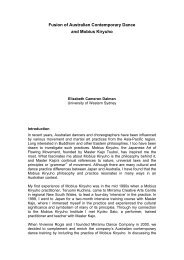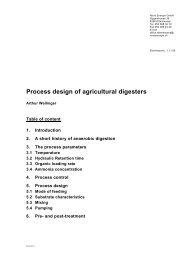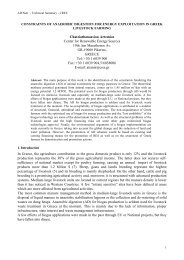III. No-Till Farming Systems - nifty
III. No-Till Farming Systems - nifty
III. No-Till Farming Systems - nifty
Create successful ePaper yourself
Turn your PDF publications into a flip-book with our unique Google optimized e-Paper software.
Preface<br />
<strong>No</strong>-till farming systems have been developed and applied around the<br />
world over several decades. The technology is dynamic: it develops and<br />
changes as we overcome obstacles in soil opening, seed placement, fertilizer<br />
banding and more. Researchers and farmers continue to modify the<br />
systems and apply no-till to a wider range of agricultural production systems.<br />
Benefits of no-till have been found in production, economic and<br />
environmental aspects of farming. As farmers apply no-till, their agronomic<br />
system moves to a new equilibrium. New investments in research<br />
of soils and plants are helping no-till to develop further.<br />
We are not aware of any text that reviews global trends in no-till. Some<br />
texts review aspects of no-till from a particular standpoint. Those texts are<br />
often written by scientists engaged in lab or plot research or from the experience<br />
of a particular country. In this text we have not constrained the<br />
reporting to a scientific plot based experience, nor have we constrained it<br />
geographically. We have encouraged those with experience and expertise<br />
in no-till to tell us their stories, which span a broad range of perspectives,<br />
including farmer experience and beliefs as well as plot research. This<br />
book is the result of the contributions of 78 authors from 20 countries or<br />
regions, describing at least 25 study areas of all habitable continents –<br />
several of them in more than one instance. These authors possess roughly<br />
one thousand person-years of no-till experience!<br />
Bringing so many contributors together from so many countries and constraining<br />
them to a common language of English presents its challenges.<br />
Some of these papers have been translated from their original language.<br />
Some expressions do not translate well.<br />
There may also be regional terms for the same implement or practice. One<br />
example of this is a ‘harvester’ or a ‘combine’– two names for the same<br />
implement that harvests crops. Another is whether we call placing the<br />
seed in the soil ‘planting’ or ‘seeding’. We are of course accustomed to<br />
many of these synonyms; others are new. For the simpler terms (planting<br />
or seeding) we have not enforced a consistent style. For less common<br />
terms, we have attempted to provide a description of the term where the<br />
meaning is not evident from the context.<br />
xiii














